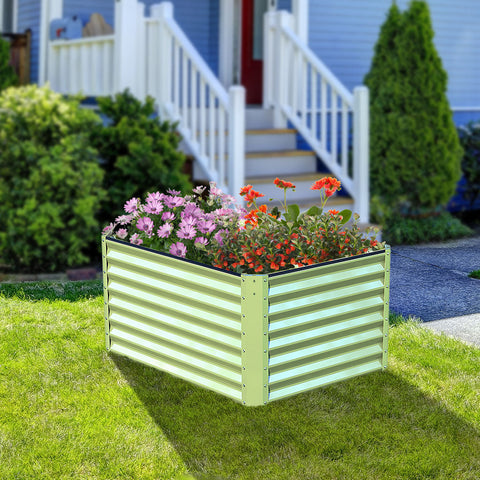It may seem like raised bed gardening is only for small-scale home gardeners, but small farmers and homesteaders will find it beneficial for mass production as well. The following content also has some reference value for raised garden beds.
The advantages of raised bed
If you have poor, rocky soil, or live in an area with a high water table or excessive rainfall, raised beds can solve your drainage and soil fertility problems. Some raised beds use natural soil from the ground, while others are empty and filled with a mixture.

Raised beds allow the soil to warm faster in the spring. The soil has never been stepped on, so it doesn't get compacted. Weeds are less of a problem in raised soil, especially if you use a weed-free soil mix to begin with
You can grow almost anything on a raised bed: fruits such as strawberries, blueberries and raspberries; Vegetables, herbs and flowers.
Overhead bed material
The simplest raised soil is a mound that rises a few inches above the surrounding terrain. They don't even have to take sides! Many smallholder farmers use this raised bed or raised row gardening to help the soil drain faster and to add additional corrections to the top of the soil for shallow crops and to help seedlings grow better.
But many gardeners choose beds with sides. The sides can be made of wood, stone or cement. It's really a question of what's cheapest for you versus what you have.
Timber for raised beds
Cedar is a good wood because it is resistant to rot. Hemlock is a cheaper alternative and works well (my bed is made out of hemlock). Juniper and rosewood are other common wood choices. Do not use pressure treated wood as a bed, as it may leach harsh chemicals into the soil.
Other materials
Other options include concrete blocks, natural stone or brick. You can also use boards made from recycled plastic, like those used for decks and other outdoor structures.
You can also use bales of hay or straw for the sides of your raised bed. The straw will break down after a season, but you can move it to the compost pile and use the new packet next year
The size of the raised bed
You may want to know the size of the raised bed. The deciding factor is that you need to be able to enter the bed from all directions. Three to four feet wide is ideal. Technically, raised beds can be as long as you want. But limiting raised beds to 8 to 24 feet in length makes crop rotation easier, since each crop can be rotated onto a brand new bed. This can suppress pests that may spread disease through a long bed of soil.
Raised beds should be at least 6 inches deep and up to 36 inches deep. If you have rich soil under your bed, the roots will go deep into the soil and continue to grow.

How many elevated beds do you need?
The number of beds is limited only by your budget and is determined by your desired yield. If you are a homesteader seeking food self-sufficiency, a rough guide is 700 square feet of growing space per person. Market gardeners use more. If you make a bed 4 feet wide and 25 feet long, that means seven tall beds per household. For a raised bed 4 feet wide 8 feet long (a very standard size), there will be 22 beds per person.
If you want to use raised beds to grow large amounts of food, you will need to create quite a few of them! Don't be afraid. You can add a few raised beds each season while continuing to grow crops on the ground. But if raised beds are your only option for growing, with an investment of time, labor and money, many seasons of rewards can be enjoyed.
The key is to build beds in the summer or fall for the next season, not in the spring when you really want to use them. Plant a cover crop for the winter. In the spring, you can cut down the cover crop, add it to the compost, nurture the existing soil in the bed, and plant.









